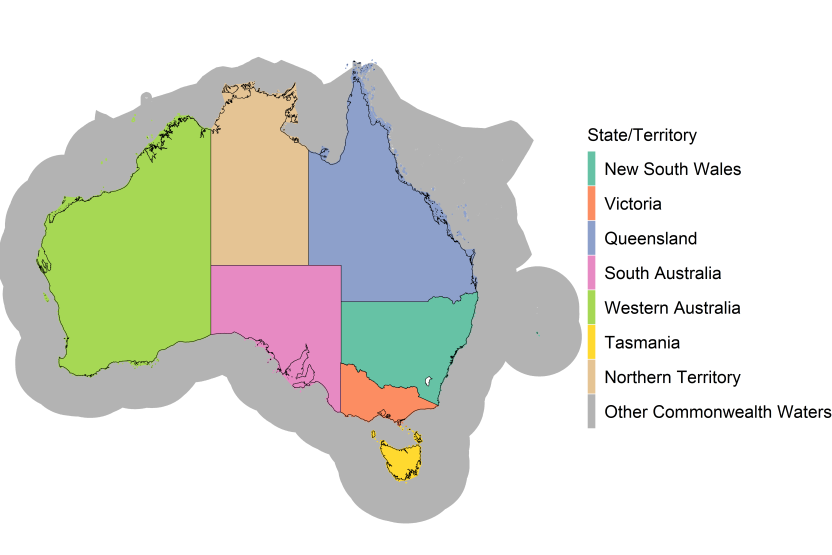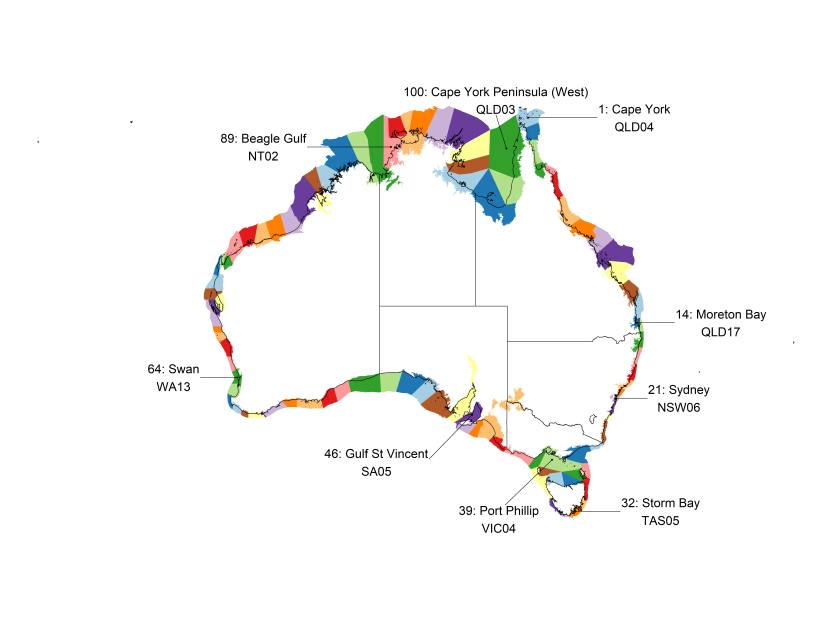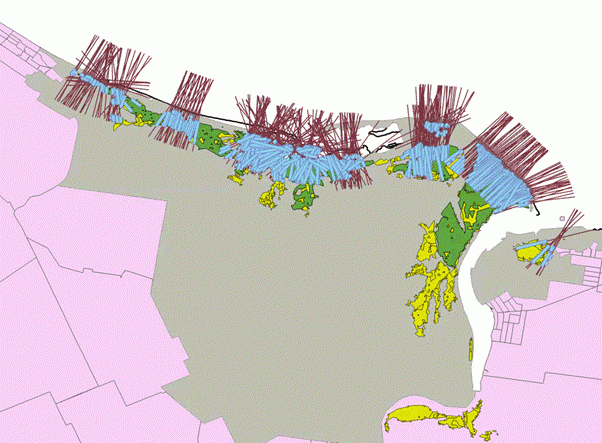Geoscience Australia (2022). DEA Mangrove Canopy Cover (Landsat). https://cmi.ga.gov.au/data-products/dea/634/dea-mangrove-canopy-cover-landsat
Layton, C, Coleman, M. A., Marzinelli, E. M., Steinberg, P, D., Swearer, S. E., Vergés, A., Wernberg, T., & Johnson, C. R. “Kelp Forest Restoration in Australia.” Frontiers in Marine Science 7 (2020). https://doi.org/10.3389/fmars.2020.00074.
Lovelock, C. E., Adame, M.F., et al. (2022). "An Australian blue carbon method to estimate climate change mitigation benefits of coastal wetland restoration." Restoration Ecology e13739.
Lymburner, L., Bunting, P., Lucas, R., Scarth, P., Alam, I., Phillips, C., Ticehurst, C., & Held, A. (2020). Mapping the multi-decadal mangrove dynamics of the Australian coastline. Remote Sensing of Environment, 238, 111185. https://doi.org/10.1016/j.rse.2019.05.004
Lyons, Mitchell. (2022). “Experimental Intertidal Seagrass Map for Australia - map delivery”. Report prepared for Department of Climate Change, Energy, the Environment and Water. University of New South Wales. 27 October 2022.
United Nations et al. (2016). SEEA Technical Note: Land Accounting. Available at: https://seea.un.org/sites/seea.un.org/files/seea_technical_note_-_land_jan_2017_draft.pdf
United Nations et al. (2021). System of Environmental-Economic Accounting— Ecosystem Accounting (SEEA EA). White cover publication, pre-edited text subject to official editing. Available at: https://seea.un.org/ecosystem-accounting
Verhagen, H. (2012). "The use of mangroves in coastal protection." COPEDEC 2012: Proceedings of the 8th International Conference on Coastal and Port Engineering in Developing Countries, Chennai, India, 20-24 February 2012.
Ware, D. and Z. Banhalmi-Zakar (2017). Funding coastal protection in a changing climate: Lessons from three projects in Australia. N. C. C. A. R. Facility. Gold Coast.
Young, M. A., O. Serrano, et al. (2021). "National scale predictions of contemporary and future blue carbon storage." Sci Total Environ 800: 149573.


